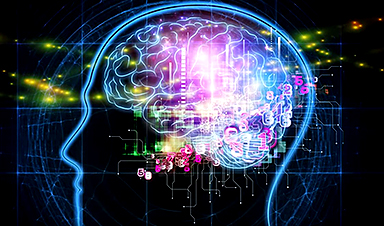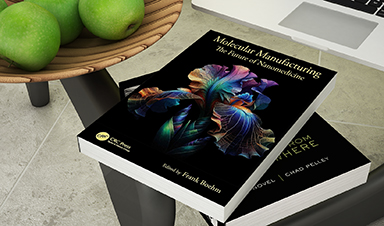
The text of the video commentary:
Elon Musk’s new project Neuralink has been making headlines recently, but very little is known about this mysterious company so far. We’re going to answer the question ‘What is Neuralink?’ and let you know why you should be paying very close attention.
I’m Zachary Maslanik, lead video producer at cybrink.com and I will be bringing you up to date with all the latest developments in science, technology and business. Cybrink will be your window into the future, so subscribe now for more content.
So what is Neuralink?
Back in 2015, Professor Pedram Mohseni and Rudolph J. Nudo created a startup called ‘NeuraLink’. These pair of neurotech researchers had developed a device that could potentially help people suffering from brain injuries. Investors didn’t show a great deal of interest, but in 2016 a mysterious unknown investor came along with an offer to purchase the rights to the name, Neuralink, for tens of thousands of dollars. They sold, and that investor later turned out to be multi billionaire, Elon Musk.
Fast forward to the 27th of March 2017 and Musk announces that he will be backing a new brain-computer interface venture, Neuralink. The ultimate goal of this new company is to merge man with machine, fusing human intelligence with artificial intelligence to bring humanity up to a higher level of cognitive reasoning. Without this technology, Musk argues that humans will be unable to keep pace with advances in artificial intelligence, and that humans will become the intellectual equivalent of the house cat.
So far, Musk has been calling this brain-computer interface technology ‘neural lace’. In essence, neural lace is an ultra-thin mesh that is implanted in the skull, and forms a body of electrodes which are able to monitor brain function. It’s not entirely clear at this time how far along the technology is in its development phase. But eventually, neural lace should enable humans to upload or download information directly from a computer. Just like Neo from The Matrix, in a matter of minutes you too could proclaim, “I know Kung Fu”.
In order to insert neural lace, a tiny needle which contains the rolled up mesh is placed inside the skull, whereby the mesh is then injected. The mesh unravels upon injection, encompassing the brain. Gradually, the neural lace will integrate itself with the human brain, creating a perfect symbiosis between man and machine. So far, neural lace has been tested on live mice. Upon autopsy, researchers found little negative consequences associated with the insertion of this mesh-like structure. However, I’m not sure if I want to be the first human volunteer.
This technology sounds amazing. The ability to hook up our brains with machines and thereby enhance human intelligence could open up whole new worlds of possibilities for our species.
It could even be the catalyst for the almost mythical technological Singularity. More on this another time. However, some critics are raising concerns about the ethical and real world implications and consequences of this technology.
For example, in a world where everyone’s thoughts are connected to the internet, how would this affect our personal privacy? Would authoritarian governments seize upon the opportunity to spy on us or even take control of our minds? And what about computer hackers? Would they be able to exploit vulnerabilities in the software of our minds, or inject viruses directly into our consciousness? All of this remains to be seen.
Until then, let’s just be content that Musk’s Neuralink may be able to help the disabled and those suffering from brain injuries to lead more productive and happier lives in the not too distant future.
Than you so much for watching this video. If you enjoyed it, please make sure to subscribe and leave a like. Here is a question for you! Do you think you will hook up your brain directly with a computer anytime soon or do you think you will you just stick to using your Smartphone for now? If you had any thoughts about this or anything else in the video be sure to leave a comment down below! We’ll see you next time with more interesting insights into the future from cybrink.com.
Image Credit: cybrink.com / Youtube
News This Week
Two New Books From Frank Boehm, NA Founder – To be Released Dec. 2025
Molecular Manufacturing: The Future of Nanomedicine This book explores the revolutionary potential of atomically precise manufacturing technologies to transform global healthcare, as well as practically every other sector across society. This forward-thinking volume examines [...]
What could the future of nanoscience look like?
Society has a lot to thank for nanoscience. From improved health monitoring to reducing the size of electronics, scientists’ ability to delve deeper and better understand chemistry at the nanoscale has opened up numerous [...]
Scientists Melt Cancer’s Hidden “Power Hubs” and Stop Tumor Growth
Researchers discovered that in a rare kidney cancer, RNA builds droplet-like hubs that act as growth control centers inside tumor cells. By engineering a molecular switch to dissolve these hubs, they were able to halt cancer [...]
Platelet-inspired nanoparticles could improve treatment of inflammatory diseases
Scientists have developed platelet-inspired nanoparticles that deliver anti-inflammatory drugs directly to brain-computer interface implants, doubling their effectiveness. Scientists have found a way to improve the performance of brain-computer interface (BCI) electrodes by delivering anti-inflammatory drugs directly [...]
After 150 years, a new chapter in cancer therapy is finally beginning
For decades, researchers have been looking for ways to destroy cancer cells in a targeted manner without further weakening the body. But for many patients whose immune system is severely impaired by chemotherapy or radiation, [...]
Older chemical libraries show promise for fighting resistant strains of COVID-19 virus
SARS‑CoV‑2, the virus that causes COVID-19, continues to mutate, with some newer strains becoming less responsive to current antiviral treatments like Paxlovid. Now, University of California San Diego scientists and an international team of [...]
Lower doses of immunotherapy for skin cancer give better results, study suggests
According to a new study, lower doses of approved immunotherapy for malignant melanoma can give better results against tumors, while reducing side effects. This is reported by researchers at Karolinska Institutet in the Journal of the National [...]
Researchers highlight five pathways through which microplastics can harm the brain
Microplastics could be fueling neurodegenerative diseases like Alzheimer's and Parkinson's, with a new study highlighting five ways microplastics can trigger inflammation and damage in the brain. More than 57 million people live with dementia, [...]
Tiny Metal Nanodots Obliterate Cancer Cells While Largely Sparing Healthy Tissue
Scientists have developed tiny metal-oxide particles that push cancer cells past their stress limits while sparing healthy tissue. An international team led by RMIT University has developed tiny particles called nanodots, crafted from a metallic compound, [...]
Gold Nanoclusters Could Supercharge Quantum Computers
Researchers found that gold “super atoms” can behave like the atoms in top-tier quantum systems—only far easier to scale. These tiny clusters can be customized at the molecular level, offering a powerful, tunable foundation [...]
A single shot of HPV vaccine may be enough to fight cervical cancer, study finds
WASHINGTON -- A single HPV vaccination appears just as effective as two doses at preventing the viral infection that causes cervical cancer, researchers reported Wednesday. HPV, or human papillomavirus, is very common and spread [...]
New technique overcomes technological barrier in 3D brain imaging
Scientists at the Swiss Light Source SLS have succeeded in mapping a piece of brain tissue in 3D at unprecedented resolution using X-rays, non-destructively. The breakthrough overcomes a long-standing technological barrier that had limited [...]
Scientists Uncover Hidden Blood Pattern in Long COVID
Researchers found persistent microclot and NET structures in Long COVID blood that may explain long-lasting symptoms. Researchers examining Long COVID have identified a structural connection between circulating microclots and neutrophil extracellular traps (NETs). The [...]
This Cellular Trick Helps Cancer Spread, but Could Also Stop It
Groups of normal cbiells can sense far into their surroundings, helping explain cancer cell migration. Understanding this ability could lead to new ways to limit tumor spread. The tale of the princess and the [...]
New mRNA therapy targets drug-resistant pneumonia
Bacteria that multiply on surfaces are a major headache in health care when they gain a foothold on, for example, implants or in catheters. Researchers at Chalmers University of Technology in Sweden have found [...]
Current Heart Health Guidelines Are Failing To Catch a Deadly Genetic Killer
New research reveals that standard screening misses most people with a common inherited cholesterol disorder. A Mayo Clinic study reports that current genetic screening guidelines overlook most people who have familial hypercholesterolemia, an inherited disorder that [...]






















Leave A Comment